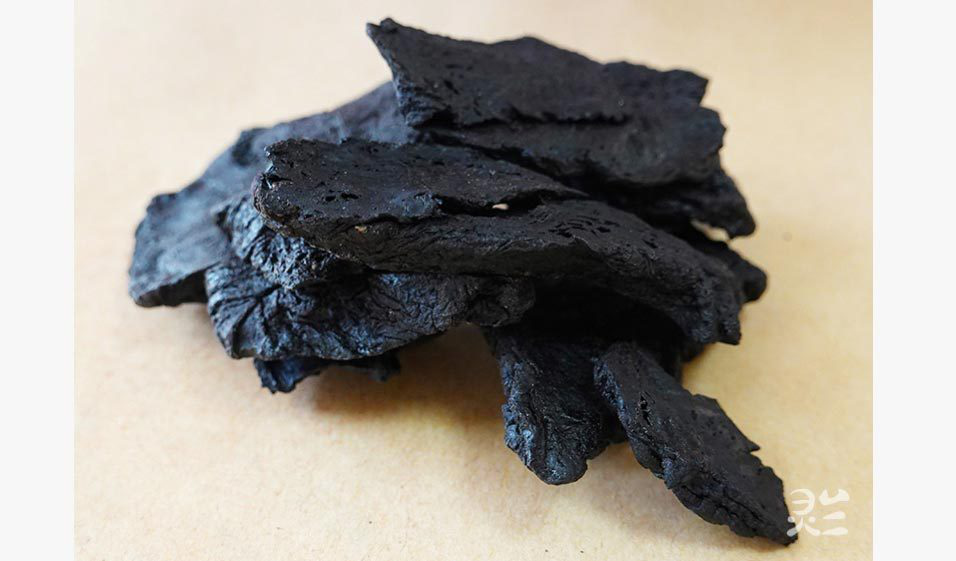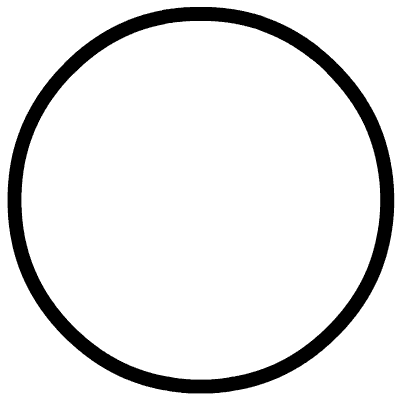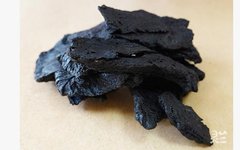
 TCM Book ClubIssue 3588One issue daily, accompanying the growth of TCM practitionersIIntroduction:Regarding the application of a single herb, we should abandon stereotypes and return to the fundamental applications for diseases. Moreover, we should understand the herb within different formulas. Only then can we grasp it more comprehensively. Is Shudi (Rehmannia glutinosa) limited to the six applications listed in this article? Clearly not. What other wonderful uses of Shudi do you know? Feel free to discuss in the comments. (Editor/Yu Ye)Click the bottom right corner of the article to【Like】【View】Establish a deep reading (friendship) relationship
TCM Book ClubIssue 3588One issue daily, accompanying the growth of TCM practitionersIIntroduction:Regarding the application of a single herb, we should abandon stereotypes and return to the fundamental applications for diseases. Moreover, we should understand the herb within different formulas. Only then can we grasp it more comprehensively. Is Shudi (Rehmannia glutinosa) limited to the six applications listed in this article? Clearly not. What other wonderful uses of Shudi do you know? Feel free to discuss in the comments. (Editor/Yu Ye)Click the bottom right corner of the article to【Like】【View】Establish a deep reading (friendship) relationship

Author/Xu Shu
Shudi (熟地黄) has a sweet and slightly bitter taste, thick flavor and thin qi, with yin containing yang. It greatly nourishes essence and blood, nourishes kidney water, fills bone marrow, benefits true yin, replenishes the original qi of the kidney, and nourishes the original essence of the five organs. It is a key herb for nourishing blood and benefiting essence.
In the Ming Dynasty, the great physician Zhang Jingyue was the foremost expert in using Shudi. He stated that the essence is the foundation of form, and form is born from essence; without essence, there is no form.

Thus, Zhang said: “Therefore, essence and blood are form, and form is essence and blood.” Zhang believed that “Shudi has a sweet and slightly bitter taste, thick flavor and thin qi, and is heavy… It greatly nourishes blood deficiency, nourishes kidney water, fills bone marrow, benefits true yin, specifically replenishes the original qi of the kidney, and also treats the channels that store blood…”
For treating chronic enteritis, Shudi is the monarch herb, combined with Huanglian (Coptis chinensis) and Huangqin (Scutellaria baicalensis); for treating wind-cold common cold, Shudi is paired with Jingjie (Schizonepeta) and Fangfeng (Saposhnikovia); for treating kidney yang deficiency, Shudi is combined with Gui (Cinnamon) and Fuzi (Aconite), which requires a deep clinical foundation to appreciate the subtleties, as this experience comes from the “Complete Works of Jingyue”.
In the Qing Dynasty, Fu Qingzhu and Chen Shiduo were also adept at using Shudi. Mr. Chen Shiduo’s “New Compilation of Materia Medica” states: “Shudi can generate blood and benefit essence, and promote the marrow in the bones and brain. True yin energy cannot be generated without it, and the flames of deficiency heat cannot be reduced without it.” The famous formula, Yinhua Decoction, is its representative formula, with Shudi as the monarch herb.
The “Clinical Handbook of Chinese Medicine” states: Shudi is inherently moist and greasy. If there is blood deficiency and insufficient liver and kidney, accompanied by poor spleen and stomach function, when using Shudi, it can be combined with qi-regulating herbs like Chenpi (Tangerine Peel) and Sharen (Cardamom) to reduce its greasy nature that obstructs the stomach. This is the theoretical basis for later practitioners combining Shudi with Sharen.
In my early clinical practice, I was concerned about the greasy nature of Shudi, and I dared not exceed a dosage of 10-20g, and added 10g of Sharen, but the efficacy was poor.
Now it seems that combining Sharen with Shudi is purely speculative. The greasy nature of Shudi cannot be resolved by mixing it with Sharen to address the digestive issues of the spleen and stomach.
Because Shudi requires prolonged decoction, while Sharen should be added later, if Shudi and Sharen are decocted together, the properties of Sharen would have already evaporated, thus failing to reduce the greasy nature of Shudi and unable to influence the digestive function of the spleen and stomach.
Additionally, regarding the issue of greasy tongue coating, many practitioners have approached it from the perspective of the Sanjiao (Three Burners) to eliminate dampness. Some methods are effective, while others are basically ineffective. Early in my clinical practice, I encountered a patient with recurrent oral ulcers, with a greasy tongue coating, dry mouth, and a fine, weak pulse. I prescribed Ganlu Decoction, using 30g of Shengdi (Raw Rehmannia) and 60g of Shudi, adding Renshen (Ginseng). After 7 doses, the ulcers disappeared, and after 14 doses, the tongue coating was clear.
Later, I encountered several patients with greasy tongue coatings, some with throat pain and some with cough, all of whom responded well to a large dose of Shudi. My understanding of the extensive use of Shudi comes from the Sanjiao differentiation theory of Wu Jutong from the Qing Dynasty: “Treat the upper burner like a feather (not light, not lifted), treat the middle burner like a scale (not balanced, not stable); treat the lower burner like a weight (not heavy, not sunk).” Shudi is heavy and dense, directly entering the lower burner, filling essence, transforming essence into qi, and qi transformation leads to fluid transformation, thus eliminating the thick greasy tongue coating.
1. Extensive Use of Shudi for Treating Jaundice
-
Case Sharing:
Yang, female, 75 years old. Initial diagnosis on December 6, 2018.
Main Complaint:Skin and sclera yellowing accompanied by anorexia, nausea, and abdominal distension for over a month.
Medical History:Diagnosed with gallbladder cancer at Jiaxing People’s Hospital in Zhejiang, underwent surgical drainage followed by poor efficacy with TCM treatment. Referred by a friend to my clinic for treatment.
Current Diagnosis:Facial complexion yellow and dull, skin and sclera dark yellow, spirit lethargic, poor appetite, right flank pain, normal bowel movements. Tongue coating white and greasy, pulse deep and weak.
Diagnosis:Kidney essence deficiency, yang deficiency with cold congealing.
Prescription:Yinchen Zhu Fu Decoction with added Shudi.
 Prescription
Prescription
Shudi 30g, Yinchen (Artemisia capillaris) 10g, Baizhu (Atractylodes macrocephala) 20g, Fuzi 10g, Ganjiang (Dried Ginger) 3g, Zhi Gan Cao (Honey-fried Licorice) 6g, Rougui (Cinnamon) 3g.
Previous prescriptions included Yinchenhao Decoction and Zhi Zi Bai Pi Decoction with modifications. Based on the four diagnostic methods, I diagnosed it as yin jaundice, treating with Yinchen Zhu Fu Decoction plus 30g of Shudi. One week later, the patient showed significant improvement in spirit, good appetite, gradual reduction of jaundice, and notable improvement in tongue coating and pulse. After consolidating with the original method for 3 months, the jaundice completely disappeared, followed by treatment with Xiangsha Li Zhong Decoction.
-
Clinical Insights:
Jaundice can be classified into yang jaundice and yin jaundice. Yang jaundice prioritizes detoxification, with efficacy superior to Yinchenhao Decoction. Yin jaundice is often treated with Yinchen Zhu Fu Decoction, but often with poor efficacy. The reason lies in the cold congealing and stagnation, causing bile to not follow its normal path, leading to jaundice, rooted in the kidney and marked in the liver. The treatment focus is on replenishing kidney essence, as essence can transform into qi, and qi transformation regulates the normal flow of fluids, thus Shudi is paired with Fuzi, seeking yang within yin, generating a little fire to produce qi.
2. Extensive Use of Shudi for Treating Polycystic Ovary Syndrome
-
Case Sharing
Liang, female, 28 years old. Initial diagnosis on August 30, 2016.
Main Complaint: Amenorrhea for over a year.
Medical History: The patient has been diagnosed with polycystic ovary syndrome in multiple hospitals for over a year. The hospital prescribed Diane-35 for half a year, but menstruation still did not resume, hence she came to TCM outpatient treatment.
Current Diagnosis: Amenorrhea, obesity, pale complexion, dry mouth, cold lower limbs, tongue fat with white greasy coating, pulse deep, slow, and weak.
Diagnosis: Kidney essence deficiency, yang deficiency with cold congealing.
Prescription: Si Wu Decoction combined with Shen Si Wei with modifications.
 Prescription
Prescription
Shudi 60g, Danggui (Angelica sinensis) 30g, Baishao (Paeonia lactiflora) 10g, Chuanxiong (Ligusticum chuanxiong) 10g, Tusizi (Cuscuta chinensis) 30g, Gouqizi (Goji Berries) 10g, Baji Tian (Morinda root) 15g, Xianlingpi (Epimedium) 30g, Xianmao (Curculigo) 10g, Ziheche (Placenta) 10g, Lu Jiao Pian (Deer Antler) 10g, Baizhu 60g. 14 doses.
With this modified formula, after 9 months of treatment, menstruation returned to normal, and follow-up showed no recurrence.
-
Clinical Insights
Polycystic ovary syndrome is primarily characterized by amenorrhea, obesity, or acne. Ultrasound may reveal multiple immature follicles. I pondered: why can’t the follicles develop normally? It is due to congenital kidney yang deficiency, with the uterine cavity being cold. Therefore, the treatment should greatly nourish essence and blood, warm the uterus, and regulate the Chong and Ren channels, with extensive use of Shudi (30-60-90g) being key, while also replenishing congenital essence, hence the addition of Ziheche and Lu Jiao.
3. Extensive Use of Shudi for Treating True Cold and False Heat Syndrome
The true cold and false heat syndrome is primarily characterized by sore throat, fever, dry mouth, and cold lower limbs, with a pale, fat tongue with tooth marks, and a weak pulse, treated with Yinhua Decoction with modifications.
 Prescription
Prescription
Shudi 90g, Shanzhuyu (Cornus officinalis) 15g, Maidong (Ophiopogon) 10g, Fuling (Poria) 30g, Wuweizi (Schisandra) 10g, Mudanpi (Paeonia suffruticosa) 10g, Zexie (Alisma) 10g, Rougui 3g, Fuzi 10g, Renshen 10g, Guijia (Tortoise Shell) 10g.
4. Extensive Use of Shudi for Treating Deficiency Asthma
Asthma is often a mix of deficiency and excess, exacerbated by external pathogens. For any asthma with a rough pulse, use Shudi 90g, Danggui 21g, Xingren (Apricot Kernel) 10g, Taoren (Peach Kernel) 10g, Dilo (Earthworm) 15g, and Gan Cao 6g for good results. Extensive use of Shudi can transform phlegm, stop wheezing, and replenish essence, serving three purposes with one herb.
5. Shudi for Stimulating Appetite
Chen Shiduo regarded Shudi as a sacred herb for stimulating appetite. It can stimulate appetite because “the stomach is the gate of the kidney”; when kidney water is abundant, the stomach’s fluids are naturally moistened, thus when kidney qi is sufficient, stomach qi is also sufficient, and when kidney qi rises, stomach qi also rises. Therefore, I often use Yinhua Decoction to treat anorexia.
6. Shudi for Stopping Diarrhea
Shudi’s ability to stop diarrhea is not widely known among practitioners, as its greasy nature is often overlooked. However, when encountering diarrhea due to essence deficiency, it has repeatedly shown miraculous effects.
 “Materia Medica Discrimination” states:
“Materia Medica Discrimination” states:
Shudi is sweet and warm, greatly nourishing the kidney essence. For any deficiency in the lower burner leading to diarrhea, if other herbs are ineffective, taking Shudi alone can stop diarrhea, but it must be used in doses of 60-90g.
If used in small amounts, it can cause bloating and be ineffective. Shudi’s ability to treat kidney diarrhea is similar to Baizhu’s ability to treat spleen diarrhea; although the mechanisms differ, the effects are the same. I have expressed this because many practitioners avoid using it.

Recommended Reading
Shudi: A Good Medicine for Deficiency Asthma and Mixed Deficiency and Excess AsthmaWhy is Shudi steamed and dried nine times? There is great significance in this.—Copyright Statement—• This article is excerpted from “Using Medicine Like Warfare 2” | Author/Xu Shu | Recommended by Jiang Chunyan | Edited by Yu Ye and Nian Nian.• The copyright of this article belongs to the rights holder. For learning and communication purposes only, please do not use it casually.
Download the Linglan TCM AppFree Learning
Nearly 200 ancient TCM texts
Nearly 7000 excellent TCM articles

 Click here to download the Linglan TCM App
Click here to download the Linglan TCM App

